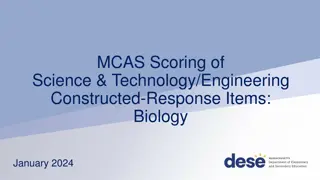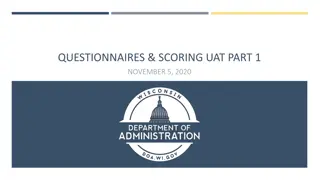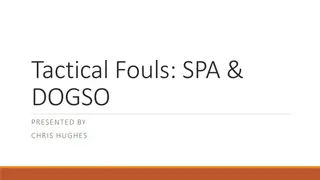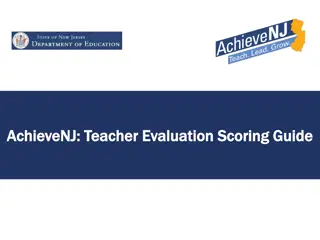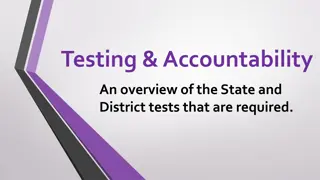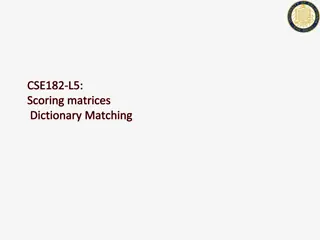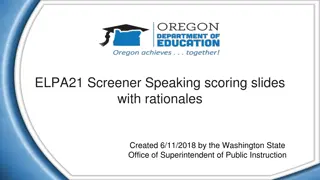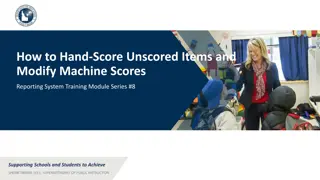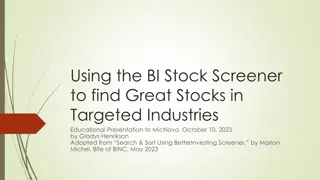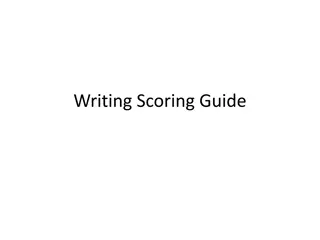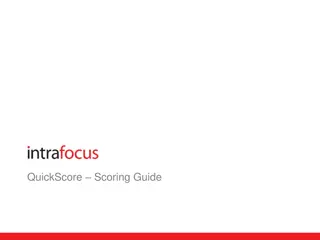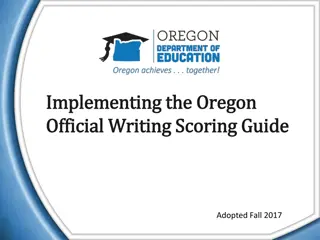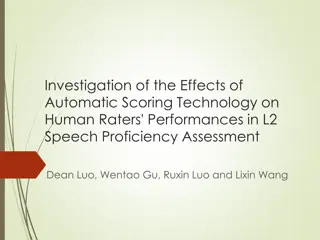ELPA21 Screener Scoring Options - Timeline & Design
ELPA21 Screener provides scoring options for assessing students' proficiency in four domains: Speaking, Reading, Writing, and Listening. The timeline for availability and requirements is detailed, along with information on the design of the screener, student data considerations, and two scoring models under consideration.
Download Presentation

Please find below an Image/Link to download the presentation.
The content on the website is provided AS IS for your information and personal use only. It may not be sold, licensed, or shared on other websites without obtaining consent from the author.If you encounter any issues during the download, it is possible that the publisher has removed the file from their server.
You are allowed to download the files provided on this website for personal or commercial use, subject to the condition that they are used lawfully. All files are the property of their respective owners.
The content on the website is provided AS IS for your information and personal use only. It may not be sold, licensed, or shared on other websites without obtaining consent from the author.
E N D
Presentation Transcript
ELPA21 Screener Scoring Options BACKGROUND: TIMELINE DESIGN STUDENT DATA UNDER CONSIDERATION: SCORING OPTIONS
Timeline ODE anticipates making ELPA21 Screener available by August 1, 2018 Students may be screened at any time throughout the year Districts have 30 calendar days at the beginning of the school year and 14 calendar days once the school year has begun to screen incoming students ELPA21 Screener optional for districts in 2018-19* ELPA21 Screener likely required starting in 2019-20* *Numbered Memo 005-2017-18
ELPA21 Screener Design Very similar look and feel to the summative ELPA21 assessment Aligned to same ELP standards Same accessibility supports available 4 domains: Speaking, Reading, Writing, Listening Proficiency determinations: Proficiency scores (1 5) for each of four domains Proficiency labels (Emerging, Progressing, Proficient)
ELPA21 Screener Design Step 1: Mandatory practice session administered one-on-one Step 2: Short operational segment that includes 2 simple, locally-scored items administered one-on- one (speaking and writing) Early stop rule: Students identified as eligible for ELD services based on responses in Step 2 stop testing Step 3: Student continues testing if student could potentially be proficient based on responses in Step 2
Student Data Considerations Administered using proxy student IDs generated in TIDE instead of SSID Screener results not linked to summative ELPA21 results in ORS or Student Centered Staging Districts will continue to report screener results to ODE through EL data collection (no change to process or data fields)
Under Consideration Two scoring models: centralized scoring vs. local scoring (scoring models apply to step 3 of screener)
ELPA21 Screener Scoring Options Screener design allows for two scoring models: Centralized scoring Completed centrally by a scoring vendor Average 3.7 business day score turnaround, no more than 7 business days Local scoring Completed by LEA staff in real time during administration of the screener Real-time scoring No contractual cost differential* (see following slides for caveat)
ELPA21 Screener Scoring Options Considerations for centralized scoring: Speaking and writing domains would be scored centrally by a scoring vendor (similar to the summative ELPA21 assessment) Longer turnaround time compared to local scoring Early evidence from states administering the screener this year with centralized scoring indicate a turnaround averaging 3.7 calendar days (max of 7 calendar days), which is within the federally required timeline for identification and placement of ELs No additional cost
ELPA21 Screener Scoring Options Considerations for local scoring: Speaking and writing domains would be scored locally in real time by the test administrator Would require new statewide training delivery model available statewide, year-round to ensure consistent, reliable scoring across the state Additional cost implications at state and local level related to training Possible risk to scoring reliability* Increased potential for scoring bias* *Raised by EL Advisory Panel
ELPA21 Screener Scoring Options Questions: What input or concerns do you have about centralized vs. local scoring? If ODE pursues local scoring, what considerations should ODE factor into the development of a training model? If ODE pursues centralized scoring, what considerations should ODE factor into its negotiations with the scoring vendor? What other questions should ODE consider to inform a decision?





